By Christine Stephenson, Jez Etherington and Sam Colyer
When we talk about delivering agile methods, we aren’t simply talking about delivering agile IT projects. We’re referring to a cohesive way of working which taps into organisational “culture” and unifies strategy through to execution. In particular, we’re looking at how and why Architecture leaders and Enterprise Architects are in a unique position to enable integrated agility and governance.
Some of the points below have been shaped by our recent event on integrated agile which was led by Christine Stephenson, Konvergent’s Chief Agile Coach who has successfully led a number of multinationals through agile architecture transformations.

As a Chief Architect you know that the role brings a variety of challenges which can make delivering business value difficult. Organisations struggle to establish an integrated agile and governance approach as it involves introducing new practices and values which can be at odds with how an organisation is already fundamentally functioning. We’re talking about teams working in silos, groups who aren’t used to communicating, and leaders who are keen to embrace agile but aren’t sure where to start.
But where there are challenges, there are also opportunities.

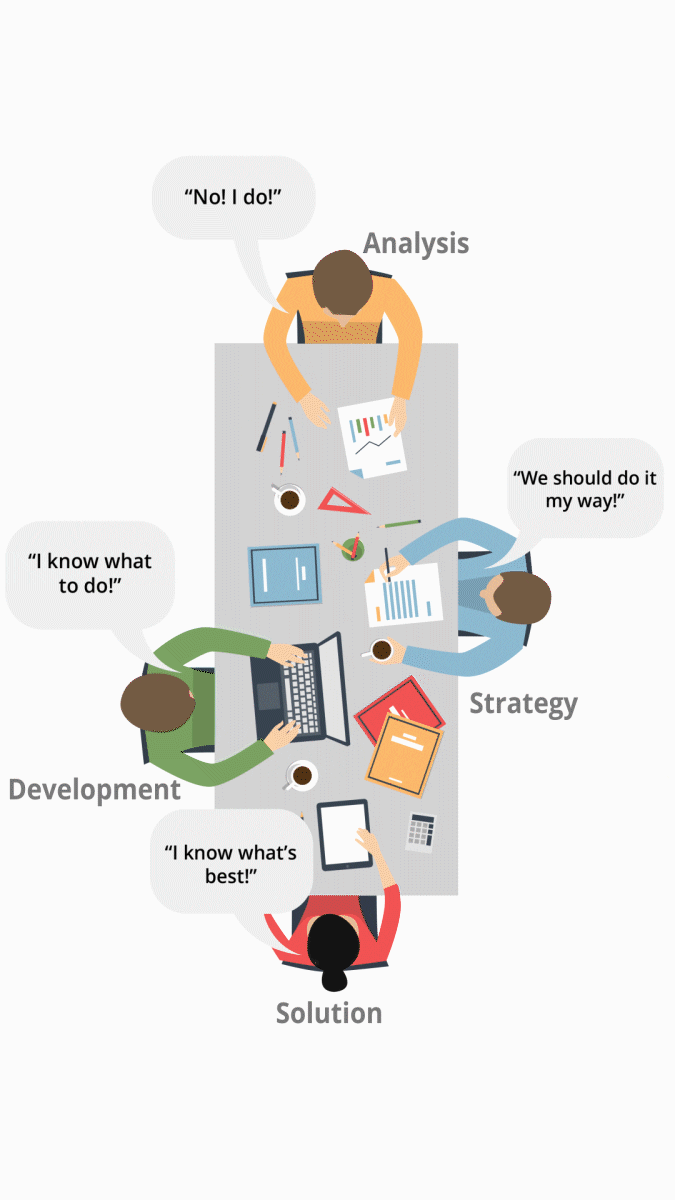
An orchestra without a conductor equals chaos. There’s a similar outcome in most business environments too. Individual teams are caught up with their own individual needs and targets, but no one is at the top, orchestrating a unified approach. Without this overview, teams are fractured and are not able to pull together to collaborate and deliver a common goal.
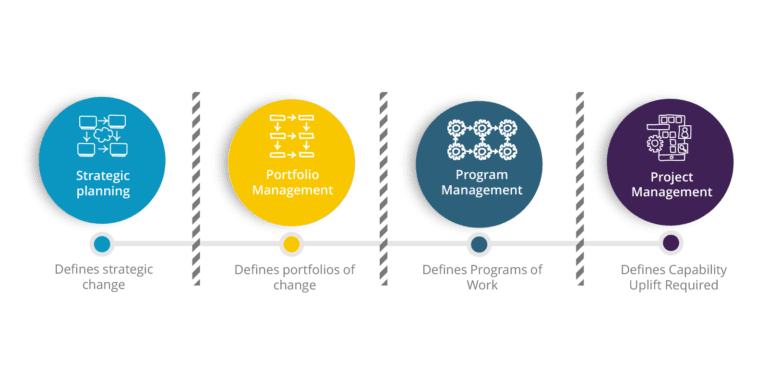
A very good question. We recently held an event on integrated agile with over 30 Chief Architects in attendance and this was one of the key questions asked. Knowing where to start with agile can be a real challenge given the varying challenges that Architects typically face. We’re going to cover this in the opportunities section further down, but know that this is an incredibly common problem.
So, there’s the all too familiar pain, but what about the opportunities? How can Chief Architects turn these challenges around, and why are they uniquely placed to do so?
The most important thing a business wants you to realise is that you are part of their organisation and understand their culture, strategies and people.
We believe an integrated approach starts with a shift in mindset. Enterprise Architects and Chief Architects need to develop the right kind of mentality to be adaptable and flexible to the problem in hand. And this is where you are in a unique position to get this right.
If Architects can develop an approach that acknowledges culture as well as the entire ecosystem of an organisation, then this can be the catalyst towards success. By speaking the right language with a true understanding of how an organisation functions, then a relationship will start positively with subsequent projects aligned directly to business needs. Architects will have the ability to influence senior stakeholders with both their passion and expertise, in order to cultivate the desired culture. Konvergent has seen how often these unique diplomatic and influencing skills can be harnessed to encourage a bottom-up and top-down collaboration.
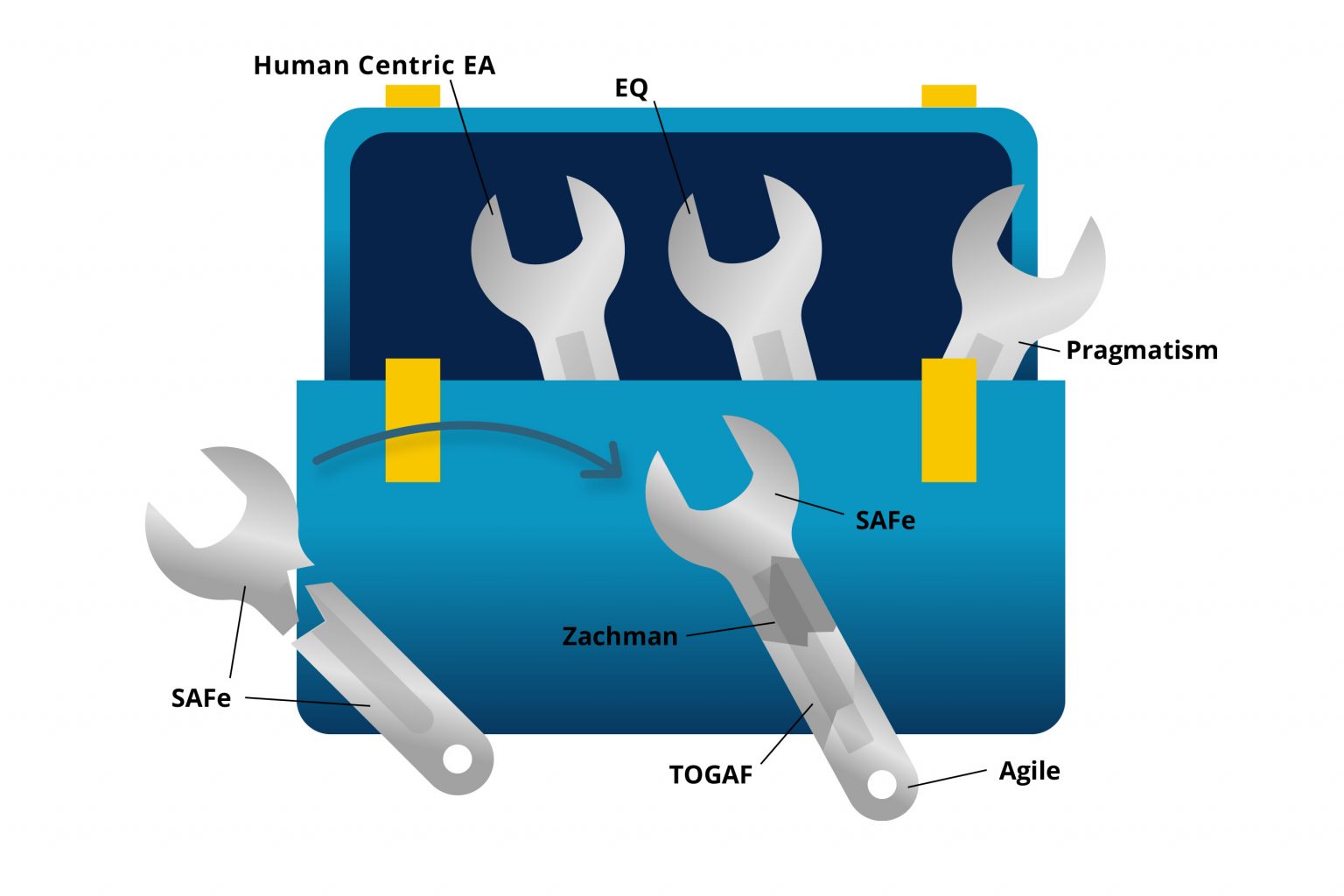
There is an unfortunate tendency to believe that one framework is a silver bullet, but don’t rush in with templates and over burden yourself with SAFe ceremonies or similar tools and techniques in an attempt to achieve a holistic outcome. Take a step back, see the bigger picture first and figure out the landscape of the organisation. Find where you can truly build a strong partnership with the business and your IT colleagues. Lead others to come on the journey with you. With the right initial mindset in place, you will be able to come in and unify the business and deliver real business value.
So, if agile SAFe training is only part of the answer, is there anything else to recommend? The Kepner Tregoe method (known as the KT-method) is a good place to start. It’s a problem-solving method which helps EA’s put aside bias, make decisions and analyse risks, all of which create a solid foundation towards a truly integrated agile approach.
Part of your unique value as an architect lies with the holistic view you have of the entire organisation. Whereas Solution Architects might have the best solution, Enterprise Architects have a wider knowledge of the other change projects taking place. This is a truly unique position to Enterprise Architects who should have a hand in, or at least close exposure to many disciplines and relationships, ranging from the overarching strategy to business design, from business development all the way through to operations. Some Enterprise Architects that we’ve spoken with joke that they often have a better understanding of what is occurring in IT than their CIO.
Very few roles sit with this viewpoint though, so it’s something to take advantage of. It’s important to take a step back, recognise the different disciplines and look for ways in which they can be joined together. A good piece of advice is to help each team to understand how their outputs are linked and how they impact one another. An induction or kick off style event will help the team appreciate and respect everyone’s contribution to the outcome being sought and will clearly define ways working. Assumption and lip-service communication can often be the greatest downfall.
And remember that as Architects we need to be inclusive and spend more time listening to people talk rather than being the ones doing the talking. We need to park our discipline, our tool, our framework and seek to be the collaborator, enabler, harmoniser and the integrator.
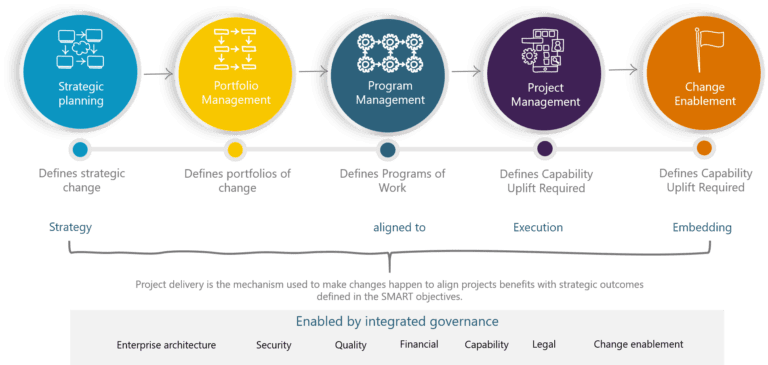
Having spent some time in the healthcare industry, Christine saw how a team of medical professionals (such as an oncologist, anaesthetist and surgeon) would be assigned to one single patient for care. These professionals would coordinate their treatment plans to work in a unified manner and the patient was always the primary focus of care. Christine saw how effective this was and was convinced that the same approach could be adopted in other business scenarios.
By building a blended team, architects will be able to identify synergies and develop techniques to enable a streamlined, more efficient process from business need through to product delivery. These newly established internal links will help to bring about solutions which are cost effective and resolve an entire problem, not just a part of it. An integrated agile approach is truly successful when these teams work as trusted partners. “The Business” is part of the multidisciplinary team.
A successful way to manage the team is to remember that not everyone in the team needs to know everything. Knowledge should be shared on a ‘needs to know’ basis otherwise progress grinds to a halt with red tape and sign off procedures. An Architect is well positioned to take on this role with the help of a project coordinator to make sure the work is completed.
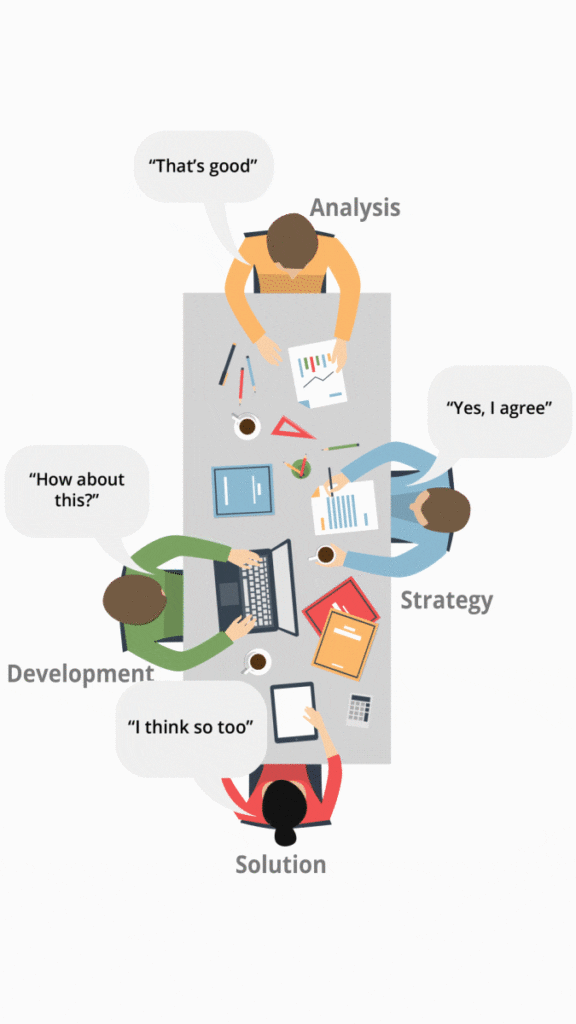

As mentioned, the question about where to start was brought up at our recent event on integrated agile.
We strongly recommend you take advantage of the opportunities and open doors that, as a Chief Architect, are particular only to your role. Identify leaders and influencers across the key teams and disciplines (some of which we’ve mentioned above) and begin by building partnerships based on common objectives and vision. These relationships will be vital when it comes to building an integrated agile approach or framework. Get this first step right and everything else will follow on the strengths of these relationships. Remember, it won’t always be an easy journey, so start with sensible expectations, get some wins and build momentum.
If you’re interested in talking more about how to build these key relationships or detailed advice on how to implement the points above, please do get in touch in Jez Etherington or Ben Clark.
The 10th in the series of the Sessions with Konvergent roundtable events...
Integrated agile and governance is when multi-disciplinary teams apply agile approaches...
An Architecture tool is considered an essential part of an...
Poorly conceived visualisation can distract your audience from your core messaging...
Here is a selection of the most pertinent and interesting reads for Chief Architects this month, alongside our thoughts.
Konvergent,
The Hoxton, 70 Colombo St,
London,
SE1 8DP
T: +44 (0)20 3744 1256
E: info@konvergent.co.uk
| Cookie | Duration | Description |
|---|---|---|
| cookielawinfo-checkbox-analytics | 11 months | This cookie is set by GDPR Cookie Consent plugin. The cookie is used to store the user consent for the cookies in the category "Analytics". |
| cookielawinfo-checkbox-functional | 11 months | The cookie is set by GDPR cookie consent to record the user consent for the cookies in the category "Functional". |
| cookielawinfo-checkbox-necessary | 11 months | This cookie is set by GDPR Cookie Consent plugin. The cookies is used to store the user consent for the cookies in the category "Necessary". |
| cookielawinfo-checkbox-others | 11 months | This cookie is set by GDPR Cookie Consent plugin. The cookie is used to store the user consent for the cookies in the category "Other. |
| cookielawinfo-checkbox-performance | 11 months | This cookie is set by GDPR Cookie Consent plugin. The cookie is used to store the user consent for the cookies in the category "Performance". |
| viewed_cookie_policy | 11 months | The cookie is set by the GDPR Cookie Consent plugin and is used to store whether or not user has consented to the use of cookies. It does not store any personal data. |